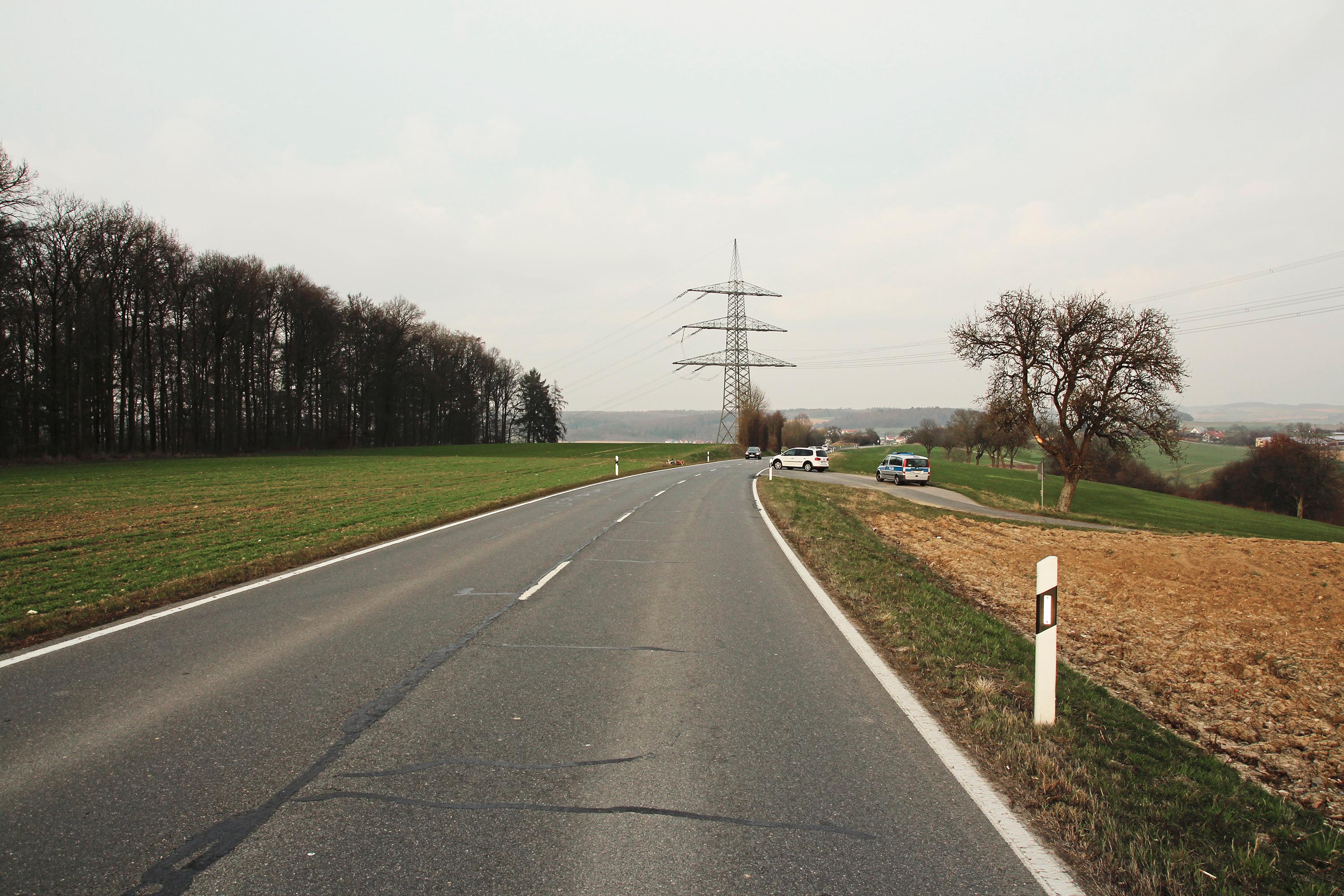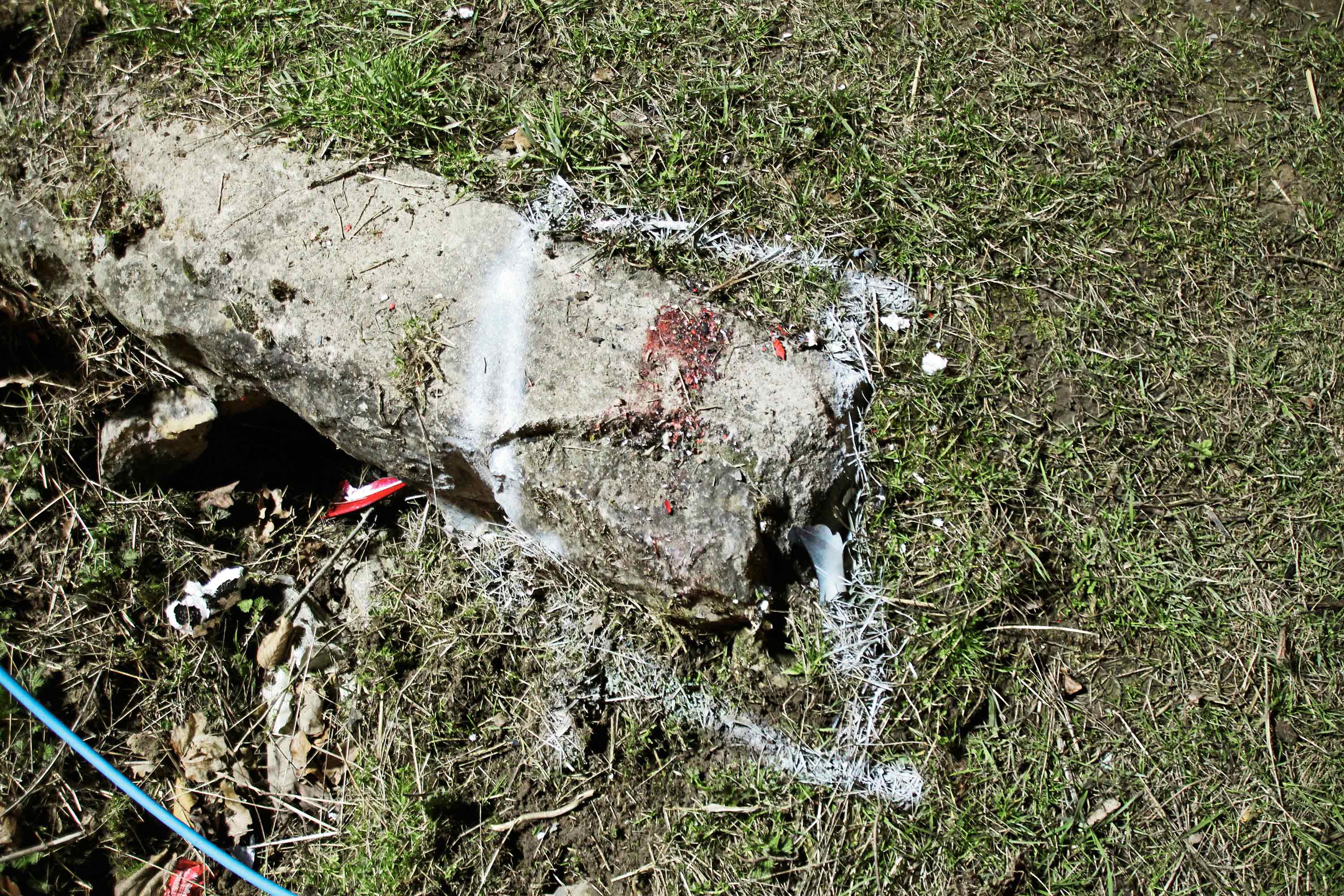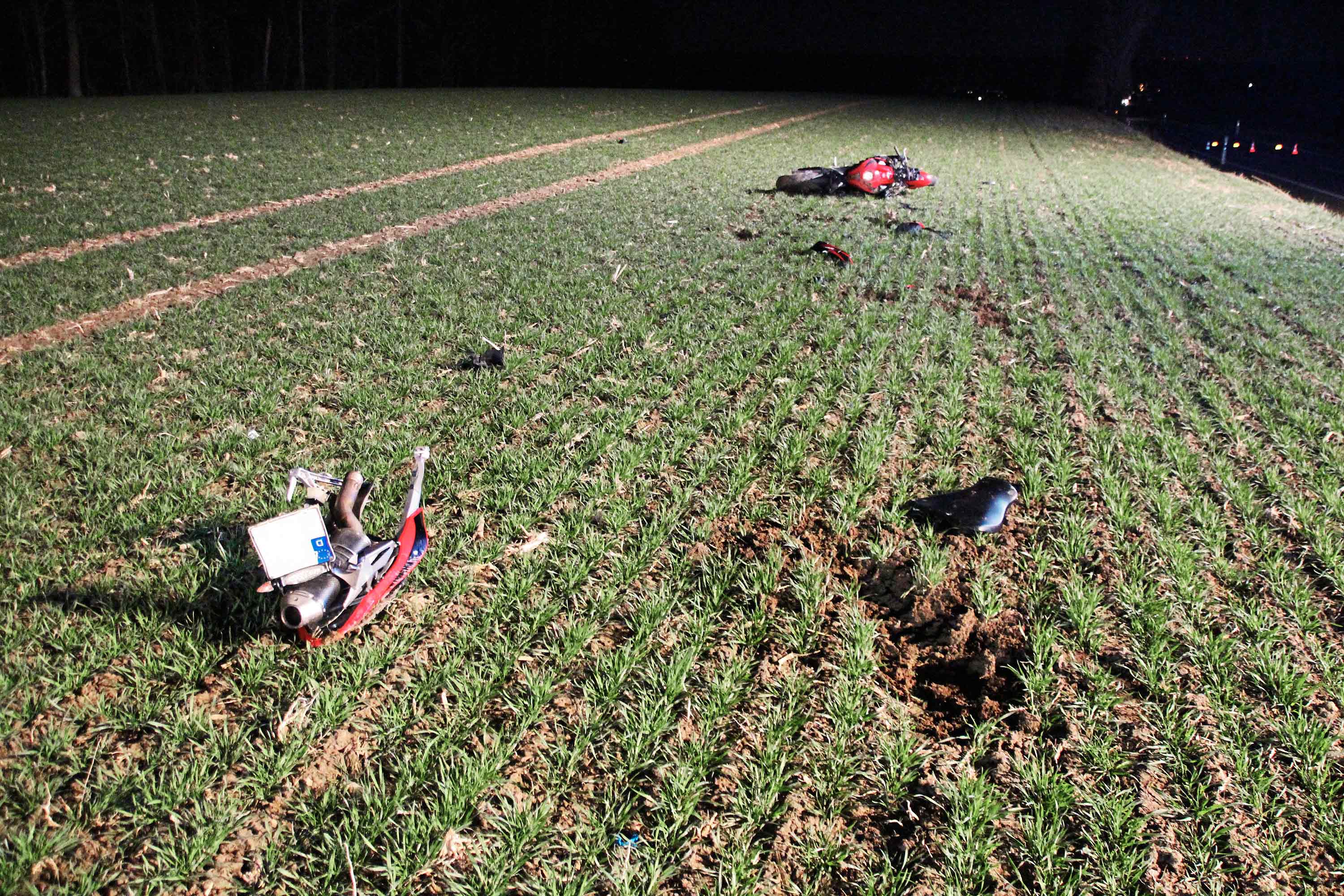Motorcycle collides with turning car
Not paying attention and speeding
Sequence of events:
A 21-year-old motorcyclist was riding along a rural road. At the same time, the driver of a car some way ahead wanted to use a country lane to the right to make a U-turn. After the car driver had brought his vehicle to a standstill on the country lane, allowing the oncoming traffic to pass, he began the turning maneuver without paying attention to the motorcyclist approaching from behind. The motorcyclist tried to evade the car by swerving onto the opposite lane, but still struck the front of the car. The motorbike then veered off the road to the left and the driver fell off with his helmet striking a concrete water course next to the road.
A 21-year-old motorcyclist was riding along a rural road. At the same time, the driver of a car some way ahead wanted to use a country lane to the right to make a U-turn. After the car driver had brought his vehicle to a standstill on the country lane, allowing the oncoming traffic to pass, he began the turning maneuver without paying attention to the motorcyclist approaching from behind. The motorcyclist tried to evade the car by swerving onto the opposite lane, but still struck the front of the car. The motorbike then veered off the road to the left and the driver fell off with his helmet striking a concrete water course next to the road.
Persons involved in the accident:
A motorcyclist, a car driver Consequences/injuries: The motorcyclist sustained serious head injuries when he struck the concrete water course and he died at the scene of the accident. The car driver suffered a shock.
A motorcyclist, a car driver Consequences/injuries: The motorcyclist sustained serious head injuries when he struck the concrete water course and he died at the scene of the accident. The car driver suffered a shock.
Cause/problem:
The cause of the accident was that the car driver attempted to perform a turning maneuver in an unsuitable location in one go, without paying sufficient attention to the flow of traffic. Furthermore, the motorcyclist had been exceeding the maximum speed limit by a significant margin.
The cause of the accident was that the car driver attempted to perform a turning maneuver in an unsuitable location in one go, without paying sufficient attention to the flow of traffic. Furthermore, the motorcyclist had been exceeding the maximum speed limit by a significant margin.
Avoidance measures, mitigation of consequences/ strategy for road safety measures:
The car driver could have avoided the accident by paying sufficient attention to traffic and looking over his shoulder properly. Even if the motorcyclist had been traveling within the maximum speed limit, he could not have avoided the accident. However, the collision speed could have been considerably lower, which might have reduced the severity of the injuries. The motorcyclist could also theoretically have evaded the car by swerving to the right if he had adhered to the maximum speed limit. The motorbike would have reached the collision site at a later point in time, which would have given the rider an opportunity to pass behind the car.
The car driver could have avoided the accident by paying sufficient attention to traffic and looking over his shoulder properly. Even if the motorcyclist had been traveling within the maximum speed limit, he could not have avoided the accident. However, the collision speed could have been considerably lower, which might have reduced the severity of the injuries. The motorcyclist could also theoretically have evaded the car by swerving to the right if he had adhered to the maximum speed limit. The motorbike would have reached the collision site at a later point in time, which would have given the rider an opportunity to pass behind the car.
Through regular road safety training, it is possible to directly recreate critical situations and train road users to react appropriately and automatically. Implementing infrastructure that mitigates accident consequences and that does not have sharp-edged and/or hard elements near the side of the road helps to reduce the injury consequences of accidents.




